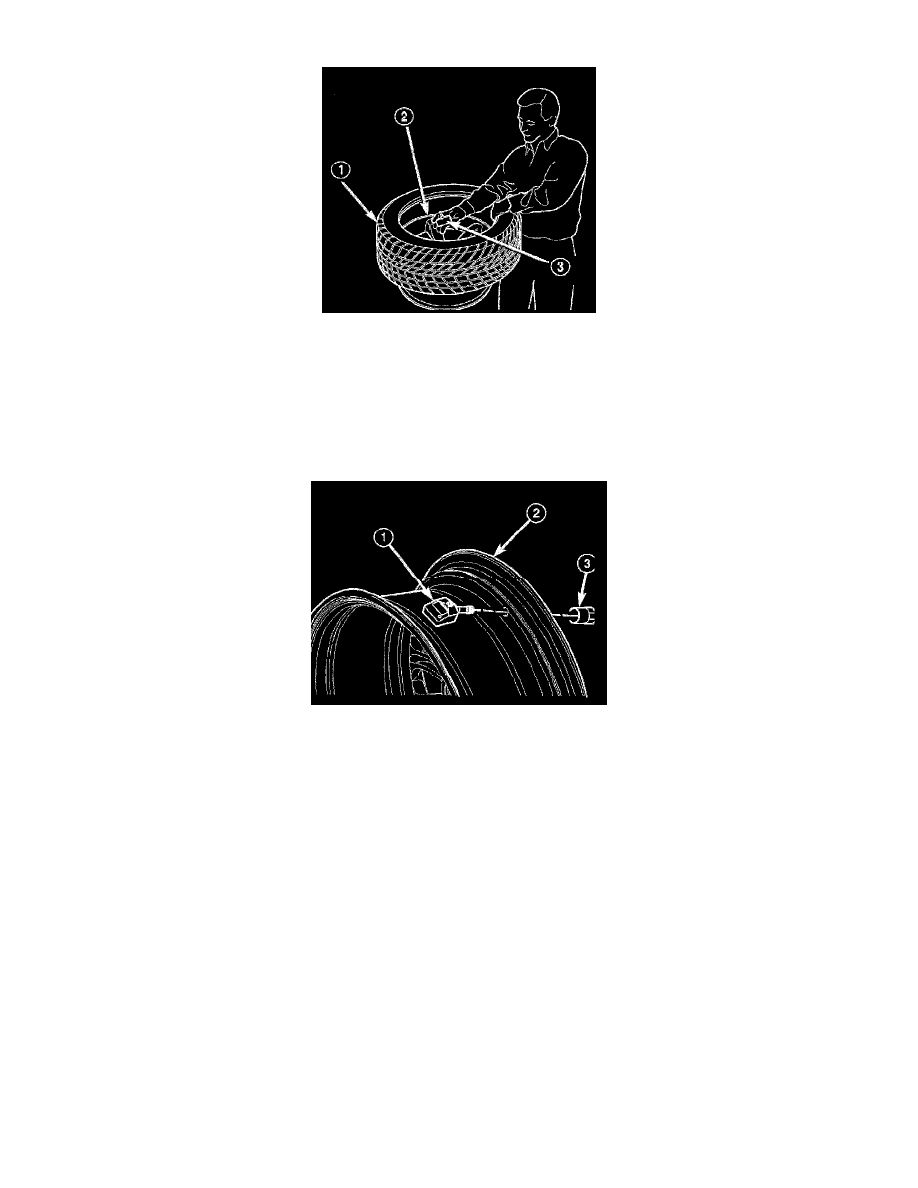Crossfire SRT-6 V6-3.2L SC VIN N (2005)

in damage to the wheel and tire.
8. Dismount the upper bead of the tire (1) from the wheel (2). The upper bead must be fully dismounted from the wheel to remove the tire pressure
transmitter from the inside of the tire. The bottom bead of the tire does not need to be removed from the wheel.
9. Pull upward on the tire (1). Reach inside the tire and remove the pressure sensor/transmitter (3).
INSTALLATION
Note: When installing the tire pressure sensor/transmitter, replace the sealing grommet at the valve stem base before installing the pressure transmitter
in the wheel. Also, be sure that the surface of the wheel that the grommet seals are against is clean and not damaged.
1. Install the tire pressure sensor/transmitter (1) on the wheel (2).
2. Install the special sensor mounting nut (3). When tightening the tire pressure sensor/transmitter nut, hold the sensor so it does not rotate. Once
tightened, the gap between the sensor and the wheel must be even on both sides as shown. If the sensor/transmitter rotates (clocks), damage to the
sensor/transmitter can occur when mounting the tire. Tighten the nut (3) to 4 Nm (35 in. lbs.).
CAUTION: When mounting the upper bead of the extended mobility tire, the proper procedure must be used. Not using the proper procedure
will result in damage to the wheel and tire.
3. Mount the upper bead of the tire on the wheel.
4. Inflate the tire(s) to the proper specification.
5. Install the original or an OEM replacement valve stem cap on the valve stem.
6. Using a soap solution, check that no air leak is present where the valve stem mounts to the wheel.
7. Balance the tire/wheel assembly using the correct procedure for using wheel flange mount and stick-on wheel weights.
8. Install the tire/wheel on the vehicle.
9. Program the identification code for the new tire pressure sensor/transmitter into the TPM module.
10. Verify that the TPM module has been programmed with the identification code from the new tire pressure sensor/transmitter using the DRBIII
scan tool. If the identification code and tire pressure thresholds from the new tire pressure transmitter are present in the receivers memory the new
tire pressure transmitter has been correctly programmed to the receiver.
